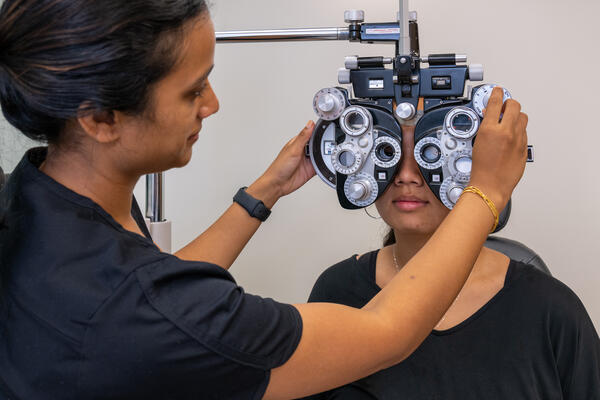The Pros and Cons of Different Refractive Surgical Procedures for Enhanced Eyecare

LASIK Surgical Procedure
LASIK surgical procedure is a generally performed refractive treatment that intends to remedy vision problems such as farsightedness, astigmatism, and nearsightedness. During the procedure, a thin flap is created on the cornea, and a laser is utilized to reshape the underlying tissue, dealing with the refractive error.
One of the main benefits of LASIK surgery is the rapid improvement in vision experienced by several people. It is necessary for people thinking about LASIK surgical treatment to undertake an extensive analysis by an eye care specialist to figure out if they are suitable prospects for the procedure.
PRK Treatment
The PRK procedure, likewise understood as Photorefractive Keratectomy, is a kind of refractive surgical procedure that aims to fix vision concerns similar to LASIK surgical treatment. Unlike LASIK, which involves developing a flap in the cornea, PRK works on the surface area layer of the cornea. During the PRK procedure, the external layer of the cornea, called the epithelium, is gotten rid of to allow reshaping of the underlying corneal tissue with an excimer laser. This reshaping helps to fix refractive errors such as astigmatism, farsightedness, and nearsightedness.
One of the benefits of PRK over LASIK is that it eliminates the danger of flap-related complications since no flap is developed throughout the surgery. In spite of the longer healing duration, PRK can be an ideal option for individuals seeking vision modification surgical procedure.
SMILE Surgery
An advanced refractive surgical treatment strategy gaining popularity in the field of ophthalmology is SMILE Surgical procedure. Little Cut Lenticule Removal (SMILE) is a minimally intrusive treatment that deals with vision by reshaping the cornea utilizing a femtosecond laser. Unlike typical LASIK surgical procedure, SMILE Surgical procedure includes producing a little incision in the cornea to extract a lenticule, which causes less interruption to the corneal framework and possibly faster recuperation times.
Among the main benefits of SMILE Surgical treatment is its capacity to deal with nearsightedness (nearsightedness) and astigmatism with high precision, causing outstanding visual outcomes for clients. The minimally intrusive nature of the procedure additionally minimizes the risk of complications such as completely dry eye disorder, making it a positive alternative for people seeking refractive surgery.

LASEK Strategy
Having actually discovered the advantages and factors to consider of SMILE Surgical procedure, another noteworthy refractive surgical treatment technique worth taking a look at is the LASEK Technique. LASEK, which represents Laser-Assisted Subepithelial Keratectomy, is a form of laser eye surgical procedure that aims to remedy refractive errors such as nearsightedness (nearsightedness), hyperopia (farsightedness), and astigmatism.
Unlike LASIK, LASEK does not include producing a corneal flap. Rather, throughout a LASEK treatment, the specialist makes use of a diluted alcohol remedy to loosen the slim external layer of the cornea, known as the epithelium. This layer is then delicately relocated aside to allow the laser to improve the underlying corneal tissue. When the cornea has actually been reshaped to the preferred degree, the epithelial layer is repositioned.
Among the key advantages of LASEK is that it can be appropriate for people with slim corneas that might not be great prospects for LASIK. Furthermore, LASEK commonly leads to minimal post-operative discomfort and a quicker healing time contrasted to PRK. The aesthetic recovery process with LASEK might be slightly longer than with LASIK.
Implantable Contact Lenses
Implantable Get in touch with Lenses offer a lasting vision improvement option for individuals looking for an alternative to traditional contact lenses or glasses. These lenses, also recognized as phakic intraocular lenses, are surgically inserted into the eye to fix refractive mistakes such as nearsightedness (nearsightedness), hyperopia (farsightedness), and astigmatism. eye doctors in andalusia. Unlike traditional contact lenses that rest on the surface of the eye, implantable get in touch with lenses work within the eye itself, giving clear vision without the requirement for daily maintenance or removal
One of the vital benefits of implantable call lenses is their permanence. As soon as placed, they can remain in the eye forever, providing consistent and stable vision correction. In addition, these lenses can be a superb alternative for individuals who are bad candidates for laser eye surgery or that prefer a reversible vision correction treatment.
Nevertheless, implantable contact lenses do bring some Click This Link threats, including the potential for cataracts or increased eye pressure. It is crucial for individuals considering this choice to seek advice from an eye treatment expert to figure out if implantable contact lenses are the ideal selection for their certain needs and eye wellness.
Final Thought
In final thought, each kind of refractive surgical procedure has its very own benefits and negative aspects. LASIK surgical procedure is preferred for its fast recuperation time, while PRK treatment may appropriate for individuals with thin corneas. SMILE surgery uses minimal discomfort throughout the treatment, yet LASEK technique might have a longer recovery procedure. Implantable contact lenses offer an option for those that are not appropriate prospects for traditional surgical directory procedures. Patients need to speak with their eye treatment carrier to determine the most effective alternative for their specific demands.

On The Whole, SMILE Surgery official website presents a promising option for people looking to enhance their vision with refractive surgical procedure.